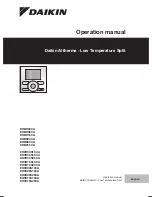
[email protected] - www.bay-tec.de 22
Level Offset
This function is used to offset the absolute angle error caused by installation, and try to establish the appropriate
level flight attitude of the plane when flying in auto-balance mode. If your plane drops down or up when switch to
auto-balance mode, you will need to perform a level offset. Usually you just need to do it once after installation,
the result will be stored inside the controller and takes effect all the time. The following illustrations show you that
what happens if an angle deviation exists during installation.
How level offsetting works?
There are 2 methods to perform the level offset, including Manual Offset and Auto Level Calibration.
Auto Level Calibration
The auto level calibration is much easier we suggest you use this way in your first-time using the controller. Before
calibrating, put the plane on the ground and keep it horizontally, click “Level Calibration” on the program card or
the software to start calibration. While the calibration is being performed, the LED will keep blinking GREEN for
about 6 seconds, don’t move the plane during this period. If you get a rapid RED flashing after the calibration, that
means the deviation is too large (larger than
±
20deg), in this case , you have to re-install the controller.
Manual Level Offset
Manual offset allows you make a further adjustment for the angles. The max adjustable value is
±
20
°
on both
roll and pitch axes. Please note that there is no direct relation between the real moving direction of the servos and
the positive or negative sign of the values, because it depends on which mounting orientation or gyro directions
that you are using. For example, if the plane keeps dropping down in self-balance mode, you may need to increase
or decrease the parameter for pitch to make the elevator surface a little upper than before, until you get a correct




































